...prepare for an engagement?
Have questions while reading this walkthrough?
You can always reach out to our team through the chat bubble in the bottom right corner or the "Support" section of the Hub.
When working in a customer facing role, it's inevitable that your clients will have interactions with other people in your organization -- which is why we've all been blindsided in a conversation before by some outstanding issue or recent pain point we weren't previously aware of. At Frame, one of our goals is to help you avoid this scenario by making it as easy as possible to see every customer interaction for an account in one central location.
1. Start by pulling up the relevant customer or account in the "Browse" dashboard; this dashboard loads the fastest since it only pulls up raw records without loading widgets which makes it a great place to play around with filters if you're unsure of what exactly you're looking for. If you're searching for interactions with a particular person, use "+contact:[email]", otherwise, you can use +org:[email convention]" to capture all users with a particular address. We recommend a time frame of at least a couple months, which you can set by adding "after:two months ago" to the filters.
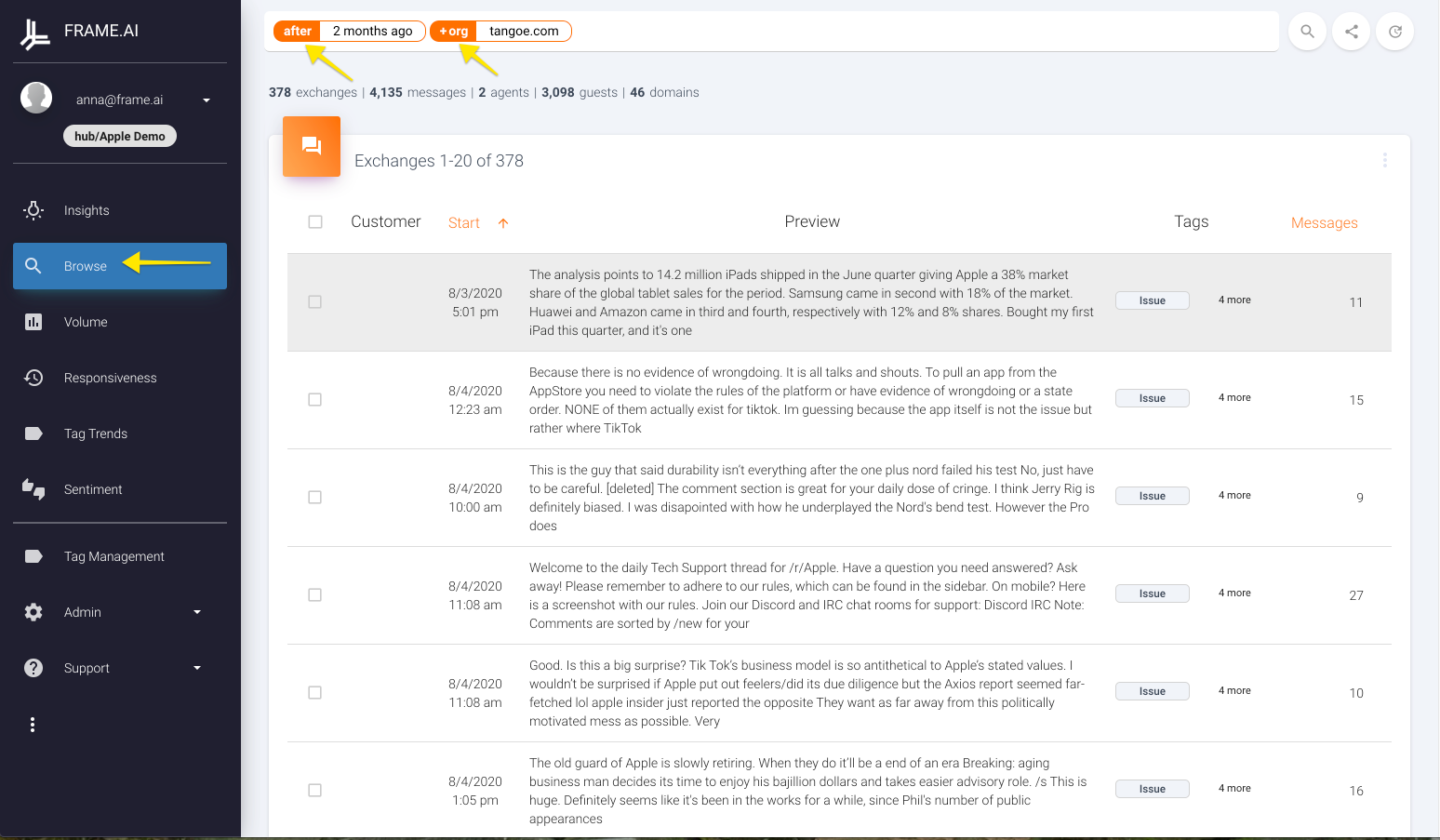
Not seeing the volume of interactions you expect?
Frame captures accounts based on email addresses, so double check that users for an account are reliably using their professional emails. If you need to capture multiple domains at once, leave off the "+", as this is essentially an "and" filter vs. an "or" filter (aka a user needs to have _ AND __).
2. Once you've got the search set how you like, navigate to the "Volume" dashboard so you can start to understand how many times customers have interacted with the organization as a whole. Here, we like to focus on "Team Effort", as this gives a quick and easy way to know who has talked to this customer recently so you can reach out to them with any more specific questions. By default, all widgets are showing "Activity," aka the number of records with a customer, but you can toggle to the number of conversations started, the total number of messages, or the estimated time spent talking to the customer at the top of the screen under the search bar if needed. We recommend using "Active Time" for this dashboard, as it'll give you the best estimate of actual time spent on interactions.
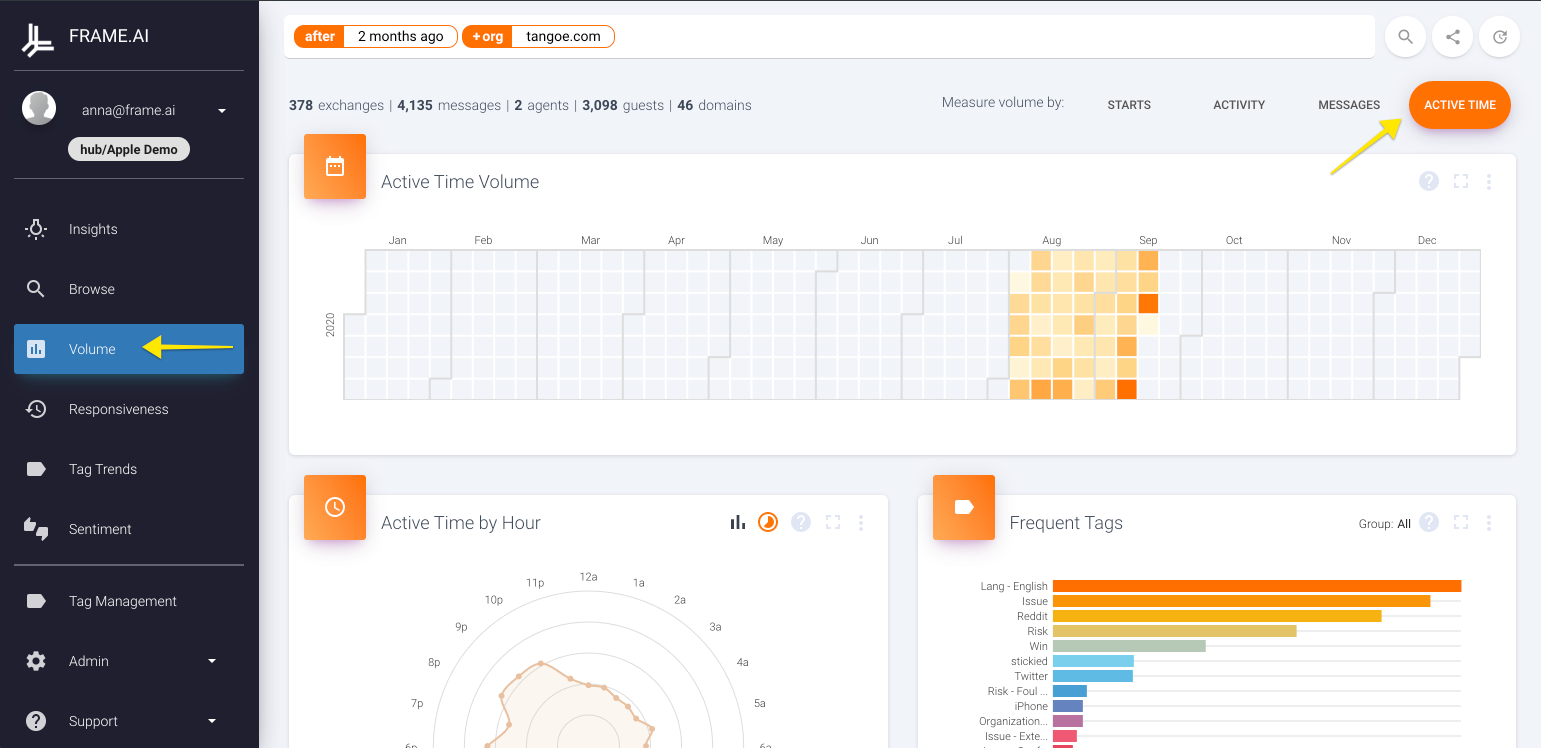
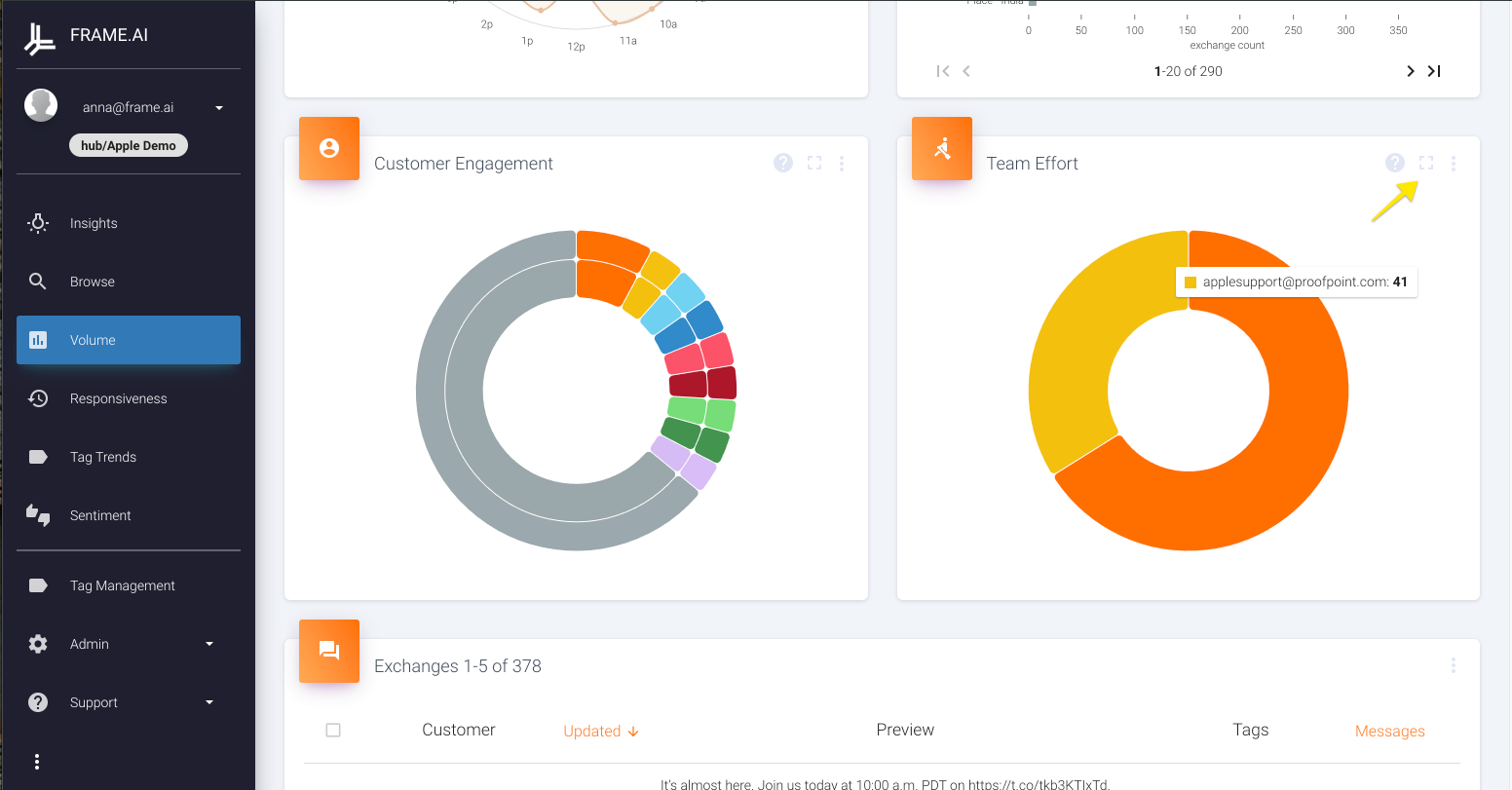
Tip
Having trouble reading a visual graph? Press on the brackets in the top right corner of the widget to expand it to a full screen view, or press the vertical "..." to download the data in CSV format.
3. Now that we understand how often a customer has interacted with the team, we want to understand how they feel about these interactions -- so navigate to the "Sentiment" dashboard. The search bar should hold all your filters, so no need to change anything in your search bar unless you want to add additional features. Right off the bat, the "Sentiment Over Time" widget should give you a good idea of how issues and risks (and wins) have varied over the course of the past few months.

4.Drill into specific phrases of interest so you can fully understand any issues that have arisen lately. We recommend focusing on "Top Risks" first since these have the highest negative affect associated with them. If you ever need more context into the conversation beyond the snippet you see, simply click on it to dive into the full record history.
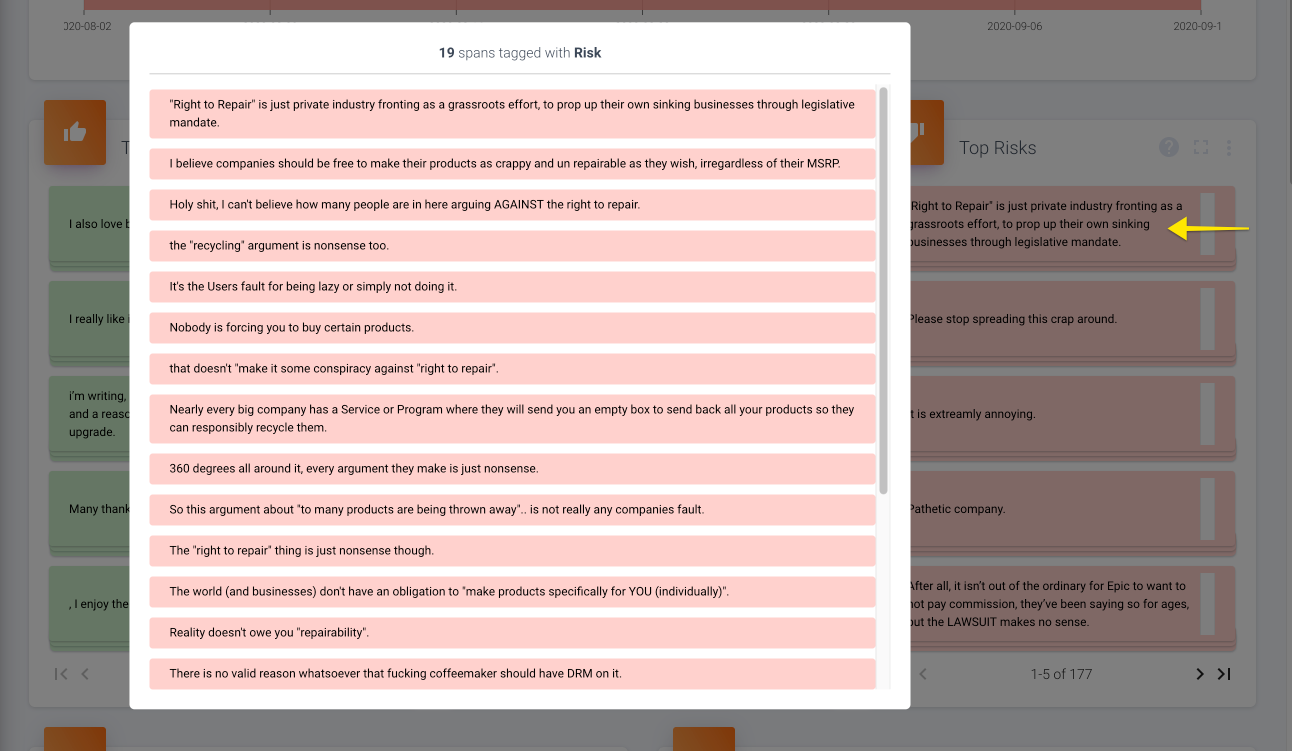
5. Investigate more specific sentiments by diving into "Tag Trends. This will allow you to hone in on categories of reasons customers may be unhappy. Try adding "+tag.group: Frame Health Indicators" as this captures different types of specific Wins, Issues, and Risks which can help inform your next steps. For example, if they frequently have conversations tagged with "Issue - Call Request," might it make sense to have a regular catch-up with them to discuss ongoing engagements? This could help the customer feel better taken care of while also minimizing time spent on back and forths internally. If you don't see this category of tags available, reach out to Frame's customer success team and we can enable this group of tags for your domain.
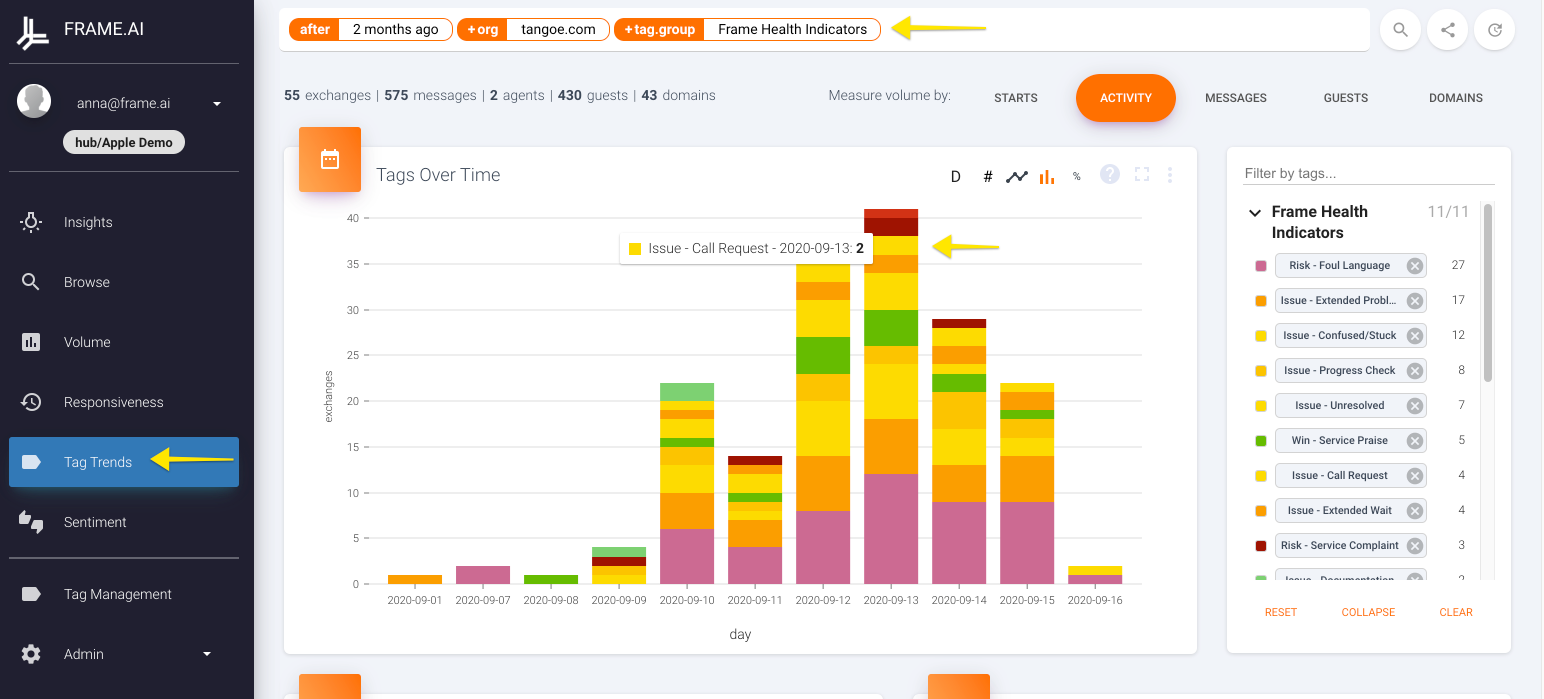
6. If you have a good pulse on the history of the account, set up more dynamic views that only show open tickets. You likely have some sort of tag marking status, so by using the option of "-tag: Status - Closed" (or whatever convention your organization uses) and removing the "after" filter, you'll now see all tickets still open for the given account/individual. Change the option "Measure volume by" to "Starts" so you can see how long each ticket has been open since its start.
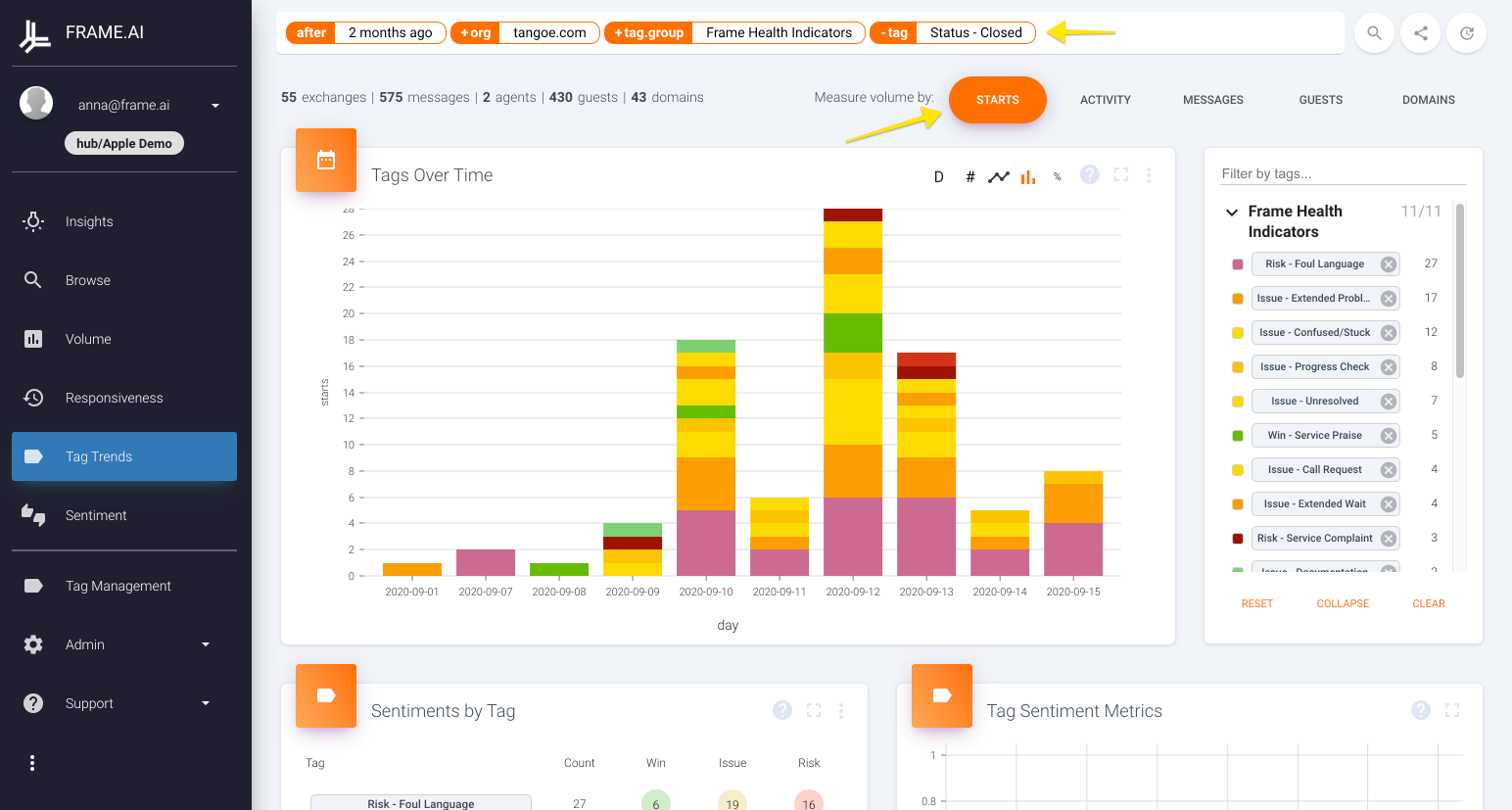
7. Create a quicklink. If you're interacting with customers regularly, chances are you won't want to manually run through all of this every time you're prepping for a meeting. So, to make it easier, copy the URLs of your favorite expanded widgets and save the link somewhere convenient and access it whenever you want at a later date. As long as you don't have a "before" filter applied, this link will update its dynamically in real time. To get you started, we've included some basic quicklinks below that you can copy into a saved note, googledoc, email, etc. -- just pick your poison, and breathe a sigh of relief at how easy it'll be to prep for every customer interaction going forward!
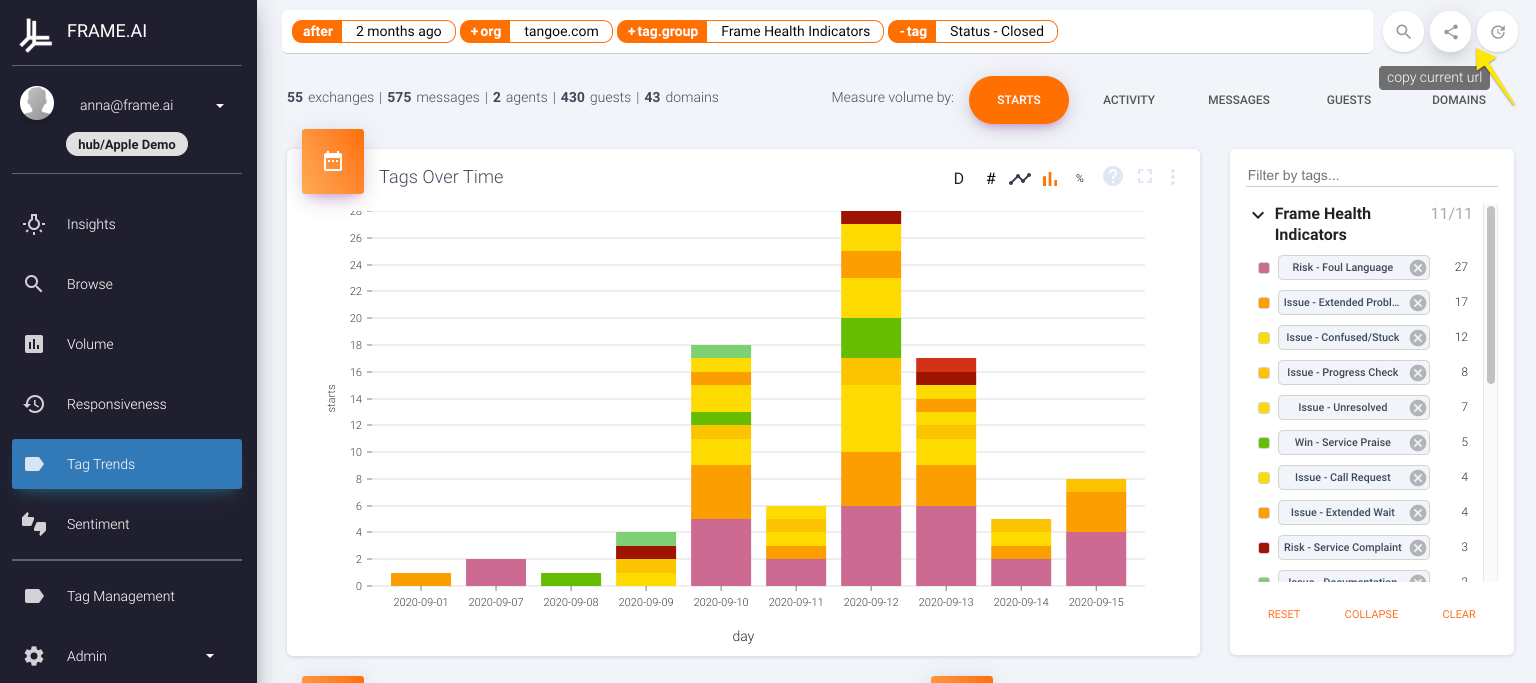
Note: For all the quicklinks below, after you click in you'll want to modify the text in the "+org" tag to the customer you're looking at, and re-save the hyperlink.
| Preparing for a Customer Engagement: Quicklinks |
|---|
| Last Two Months Team Effort for Customer |
| Last Two Months Top Risks for Customer |
| All Currently Open Tickets for Customer |
Curious how you can roll up these insights more efficiently?
Reach out to Frame's success team directly or through the chat bubble in the bottom of this screen, and we can set up a call to determine what types of automatic Insight dashboards can be created for your team.
Updated over 1 year ago